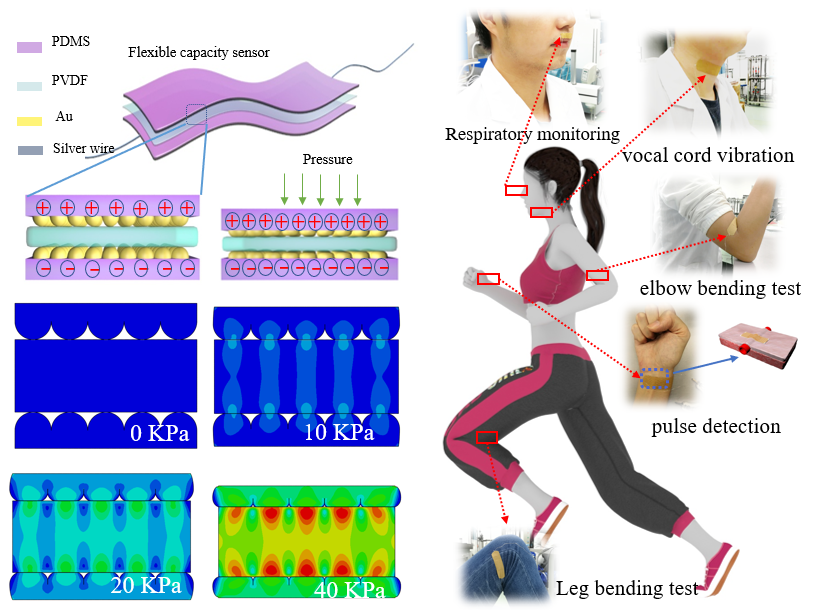Scientists Propose Flexible Pressure Sensor with Simple Preparation Process and Improved Sensitivity
Date:09-04-2020 | 【Print】 【close】
To some extent, flexible sensor can help the inanimate objects to understand how human “feel” during interactions, as well as obtain biological signals such as blood pressure and body motions.
Sensitivity is one of the most important factors which will affect the availability and accuracy of the sensor during practical applications.
However, the current conventional photolithography method faces time-consuming and high cost of preparing microstructures. Thus, researchers hope to find a low cost and high efficiency method to fabricate uniform and tunable surface microstructures.
A research team led by Dr. HU Yougen and Dr. ZHU Pengli from the Shenzhen Institutes of Advanced Technology (SIAT) of the Chinese Academy of Sciences, proposed a flexible capacitive pressure sensors with improved sensitivity. The study was published in Nano Energy.
The proposed sensor was constructed by sandwiching a top micro-arrayed electrode, a middle ultrathin dielectric layer and a bottom micro-arrayed electrode, and it demonstrated an ultra-high sensitivity of 30.2 kPa-1(0–130 Pa), fast response time of 25 ms, low detection limit of 0.7 Pa and extreme stability of 100,000 cycles without fatigue.
"We found that the microarrays on the electrode surface and ultrathin dielectric layer synergistically cause significant increase in the contact area as well as obvious reduction in the distance between two electrodes when external pressure was applied on the sensor, ultimately resulting in high sensitivity.” said Dr. HU Yougen.
The flexible capacitive pressure sensor exhibited almost ten times higher sensitivity than that of most similar sensors, which was successfully used to monitor both mild physiological signals of respiration and pulse, and large motions of elbow and leg bending.
This work provides a new idea for the fabrication of flexible pressure sensors with high sensitivity and outstanding comprehensive performance via a simple process and ingenious structures design.

Figure. Structure diagram of the flexible pressure sensor and its applications. (Image by Dr. HU Yougen)
ZHANG Xiaomin
Email: xm.zhang@siat.ac.cn